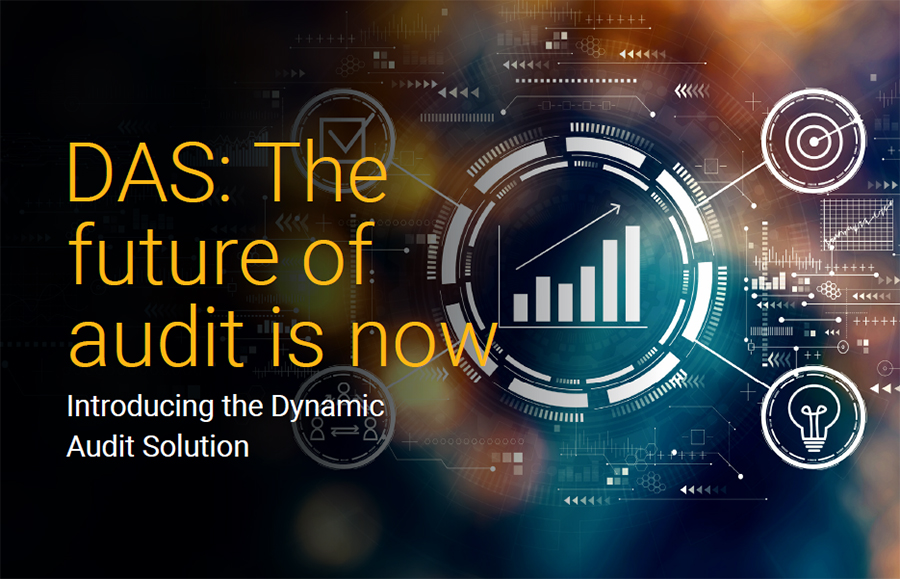Special Report: New Tech Tool for Audit
Article source:
Today’s auditors in public accounting face myriad demands. Regulators and standard setters require auditors to adhere and comply, clients want more quality, value-added services, and firms need auditors to work both in and on the business. Auditors must navigate competing priorities while still meeting deadlines, producing and performing at a high-level, managing and training staff, and growing the practice.
As a CPA with nearly 20 years' experience serving in roles including a Big 4 auditor, industry controller and a firm advisory leader, I know these demands first-hand. And I, like so many of my audit peers, have questioned how technological innovation could not only alleviate some of these demands but also benefit the firm and the client. Specifically, how can technologies including automation, Artificial Intelligence and machine learning allow us to streamline processes, provide greater insights and have higher value conversations with clients? How can we deliver quality that is felt by our clients in a way that is effective, efficient and even exciting?
These are just some of the questions the Dynamic Audit Solution (DAS) sets out to answer. This comprehensive, end-to-end cloud-based solution is built by auditors, for auditors. Its transformative methodology was developed by the AICPA, in partnership with leading firms and audit practitioners, to enhance the efficiency, quality and client-value of financial statement audits through a risk-focused, data-driven approach. Built on the Caseware Cloud platform, DAS features guided workflows, real-time collaboration and a fully integrated methodology from start to finish to support an enhanced auditor and client experience.
DAS was launched commercially this past summer to a group of early adopting firms – those willing and able to embrace change and be at the forefront of audit evolution—and feedback has been extremely positive. Some of the key benefits of DAS that we’re hearing from firms include:
As an auditor, I recognize the biggest challenges of adopting new technology are knowing where to start and managing change — change presents risk and risk aversion is baked into the profession. CPA.com can help firms assess their readiness and develop individualized adoption and change management roadmaps. We also offer comprehensive implementation consulting, training and data migration support services.
While the transition to DAS comes with the challenges of any great change, those who have taken it on say it’s worth it. As Michael McMurtry commented, “Like any project where change is involved, those first few steps are difficult, but as you make further steps in the process, I think you'll find that DAS is well worth the effort.”
To learn more at the Dynamic Audit Solution, visit CPA.com/DAS.
Article source:

All the pieces are in play for the audit profession to seize a monumental opportunity – one that will shift the trajectory of audits, and the profession itself, for decades to come. Doing so will require the profession to unite in embracing new capabilities and approaches to provide an entirely new level of value to audit clients. Enter the Dynamic Audit Solution (DAS).
Article source:
Growing excitement from users on power and benefits of transformational tool
New York, NY (May 14, 2024) - CPA.com today shared the latest highlights related to the Dynamic Audit Solution (DAS), a major initiative from the AICPA and CPA.com that targets audit transformation through a comprehensive, end-to-end, cloud-based solution built by auditors, for auditors.
Powered by a transformative methodology developed by the AICPA, and in partnership with audit professionals from leading firms, DAS is enhancing the efficiency, quality, and client value of financial statement audits through a risk-focused, data-driven approach. Built on the Caseware Cloud platform, DAS features guided workflows, real-time collaboration and a fully integrated methodology from start to finish to support an enhanced auditor and client experience.
Launched commercially in June 2023, DAS adoption has accelerated significantly:
FIRM USAGE
FIRM FEEDBACK
Users of the platform are providing valuable insights and perspectives on their experiences with the solution:
Efficiency and efficacy of audits
– Sarah Flischel, CPA, Director, AAFCPAs
Talent attraction, retention and upskilling
Greater client value
INTERESTED IN LEARNING MORE ABOUT DAS FOR YOUR FIRM?
ADDITIONAL RESOURCES
Article source: